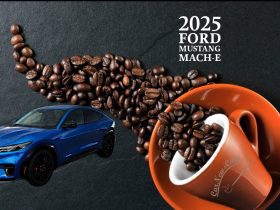In the coming months, Ford will unveil probably their most important product release in quite a while – the 2015 Ford F-150. This unveil is like poker players showing their cards. Will the changes keep the F-150 as the top selling truck and push back the competition? Or will Ford miss the mark? Ford’s future could be riding on the outcome.

While the above statements could be perceived as simply being too over the top, the reality is the importance of the next-generation Ford F-150 can’t be underestimated. In order to understand how significant the unveil is, it is important to understand how important the F-150 is to Ford.
Unlike, really, any other automaker, Ford relies deeply on one product. The facts are that the F-150 is one of the most profitable vehicle lineups in the world. According to a Barclays estimate in 2011, Ford gets a third of its $8.8 billion global operating profit from this one vehicle. Consider that globally, Ford has seen slumping sales in Europe, where they lost $1.75 billion last year, and paltry improvements in Asia. In the U.S., the Focus and Fiesta may be sales hits, but they aren’t the profit machines trucks are to Ford. Last year, Ford sold 645,361 F-series trucks which is 30 percent of all its vehicles sold.
Ford’s big problem is the competition is becoming incredibly fierce. For years, it had the best truck on the market without question. Since 2003, the Texas Auto Writer’s Association has given the F-series truck, the coveted Truck of Texas award 8 of the last 13 years. Yet, now things are changing. Ram, long the also-ran Big 3 truck maker, has finally improved its quality, adopting many new features and has won the last 2 Truck of Texas awards. GM hasn’t sat idly by either. They have just released a brand new truck with new engines. Lastly, Toyota has launched a new Tundra that could steal some sales and Nissan is planning a brand new, diesel powered model that could steal even more sales.
The Aluminum Gamble
With stiff competition and new CAFE regulations on the horizon that demand better fuel economy for 1/2-ton pickups, Ford can’t afford to stand still. The goal? The future in full-size trucks is better MPG while maintaining the truck’s toughness. Ford plans to hit both of these marks by continuing to expand their V-6 Ecoboost engine in their lineup and using aluminum to drop the vehicle’s overall weight. While the Ecoboost has already been a huge success for Ford, the use of aluminum is a big gamble.
Many truck makers have looked at aluminum, instead of steel, as the answer to cutting weight. Ford has said its next-gen Ford F-150 will look a lot like its Atlas concept that was unveiled at the 2012 Detroit Auto Show. This truck used enough aluminum to cut 700 lbs of weight – a 7% increase in fuel economy. (It also included an 8-speed transmission, active grille shutters and wheel shutters.)
Aluminum could then be seen as the proverbial “golden solution” to the weight problem. Yet, it does have some drawbacks. Aluminum is more expensive and requires lots of training and implementation costs. For example, aluminum is more challenging to work with since it will tear if pressed too hard, is more springy and likely to resist stamping and scratches easier. Also giant magnets currently move steel around a factory, aluminum requires “powerful and electricity-hungry vacuums to be used to pick up the aluminum sheets for transfer” due to its lack of magnetism, according to a Wall Street Journal story.
The use of aluminum has been done before with Audi, Jaguar and Land Rover using it. Yet, it hasn’t been done to the scale that Ford plans to do it.
Another big challenge with aluminum is perception. An aluminum-based truck isn’t seen as being as strong as steel. With truck buyers wanting strength and durability above all else, using a metal that is considered to be inferior could push buyers away.
Also, Ford offers some of the cheapest, entry-level trucks on the market. Aluminum trucks could add upwards of $1,500 in costs according to a study done by Ducker Worldwide. They found that auto makers will spend $1.50-2 to cut one pound of weight out of a vehicle with aluminum. This translates into quite an up charge when you try to cut hundreds of pounds.
The reality is that everyone is trying aluminum including GM. It is just nobody is planning on doing it on the scale that Ford is planning to do.
The best result for Ford is an Ecoboost powered, 8-speed transmission with an aluminum body having the better MPG and the same towing and durability of its current truck. That combination could easily surpass any other truck on the market and set the competition back.
The worst result? The aluminum body turns out to bend easily and not withstand a beating. Ford trucks become known as the weakest and cheapest trucks on the market, gutting Ford truck sales. Ford’s profit drops drastically and it loses billions on developing the technology to use aluminum.
A big gamble with a big payoff. It seems Ford is all in, will it pay off?







